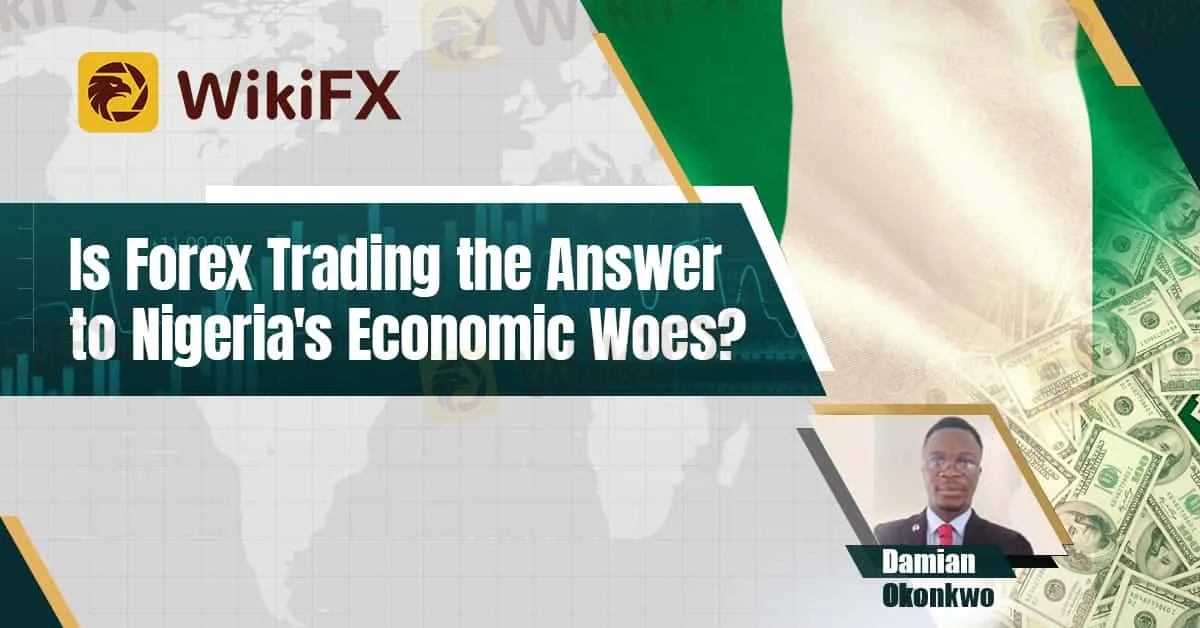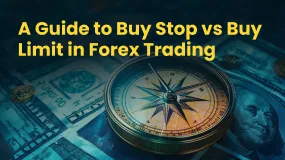简体中文
繁體中文
English
Pусский
日本語
ภาษาไทย
Tiếng Việt
Bahasa Indonesia
Español
हिन्दी
Filippiiniläinen
Français
Deutsch
Português
Türkçe
한국어
العربية
Is Forex Trading the Answer to Nigeria's Economic Woes?
Abstract:Forex trading can be a profitable avenue for a select few, but it's not a solution for Nigeria's economic woes.

By: Damian Okonkwo

Introduction
Nigeria is currently beset with a complex economic challenge arising from the scarcity of foreign exchange (forex) due to its reliance on oil exports. This has so much weakened the Naira, hindering imports, and fueling inflations. The current situation has pushed many into forex trading as the way out of the current economic woes.
Forex Trading: A Double-Edged Sword
Forex trading involves speculating on currency movements. While successful trades can generate profits, it remains a risky venture as one could lose all his investments due to extreme market volatility. The market is highly volatile, and beginners often lose money.
Deeper Problems, Not Quick Fixes
Nigeria's forex woes stem from a lack of economic diversification. The country's overdependence on oil makes Nigeria so vulnerable to oil price swings. Thus, forex trading cannot ultimately serve as the way out of the situation. Here's why:
● Limited Impact: Individual forex traders have minimal influence on the broader market.
● Win-loss Game: One trader's gain is another's loss. Therefore, while some are gaining, others are losing.
Additionally, forex trading doesn't generate new foreign currency and does not curb inflation.
Sustainable Solutions Needed
Nigeria needs long-term solutions to address forex scarcity. The ultimate solution to demands:
● Economic Diversification: Promoting exports from agriculture, manufacturing, and tech sectors will bring in more foreign currency.
● Attracting Foreign Investment: Creating a stable and attractive business environment will encourage foreign companies to invest, bringing in capital.
● Boosting Non-Oil Exports: Policies that incentivize and support the export of non-oil goods will generate more forex.
The Way Forward
Forex trading can be a profitable avenue for a select few, but it's not a solution for Nigeria's economic woes. The focus should be on long-term strategies that diversify the economy, attract foreign investment, and increase non-oil exports.

Disclaimer:
The views in this article only represent the author's personal views, and do not constitute investment advice on this platform. This platform does not guarantee the accuracy, completeness and timeliness of the information in the article, and will not be liable for any loss caused by the use of or reliance on the information in the article.
Read more

Bybit Scam Alert: What Every Trader Must Know!
The cryptocurrency trend is still growing and isn’t going away. More people are investing every day, hoping to profit from this fast-moving market. But opportunity comes with risk. If you want to start trading, make sure you choose a broker that is safe, licensed, and transparent. Remember, if you fall for the Scam brokers like Bybit, they could steal your money. Learn why Bybit is not a safe choice before you invest.

A Guide to Buy Stop vs Buy Limit in Forex Trading
Want to make a mark in forex trading by seizing hidden growth opportunities or preventing capital loss? Learn the art of locating orders. With an in-depth understanding of order functionality involving the impact on trades, traders can successfully navigate the forex market. As far as buying is concerned, traders need to acquaint themselves with a buy limit and a buy stop. These two orders play a critical role in helping traders enter and exit the market efficiently.

Investment Scam Alert: FCA Identifies 15 Scam Brokers
UK Financial regulator, FCA (Financial Conduct Authority) has issued warnings against 15 forex brokers operating without proper authorization. Checkout the list below & Be Scam ALERT .

Telegram vs WhatsApp vs Discord: Which Platform Is Best for Forex Signals?
With the rise of online communities and instant messaging apps, signal providers now deliver forex signals directly to traders through popular platforms like Telegram, WhatsApp, and Discord. In this article, we compare Telegram, WhatsApp, and Discord across key categories to help you decide which platform is best for forex signals.
WikiFX Broker
Latest News
D. Boral Capital agrees to a fine as a settlement with FINRA
Beware of Fake RS Finance: How to Spot Scams
Fortune Wave Solution: SEC Warns of Investment Scam
XS.com Broker Partnership Expands Liquidity with Centroid Integration
FCA Publishes New Warning List! Check It Now to Stay Safe
EC Markets: A Closer Look at Its Licenses
Housewife Scammed of RM68,242 in Online Investment Scam
From Charts to Profits: Unleashing the Power of Forex Trading Tools
Is TD Ameritrade Safe? How to Spot Fake URLs and Stay Protected
Engineer Loses RM230,000 in “Elite Group” Investment Scam
Currency Calculator


